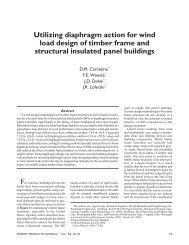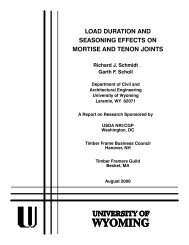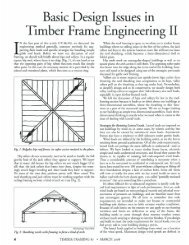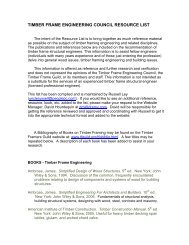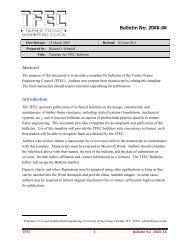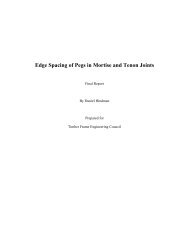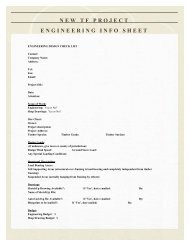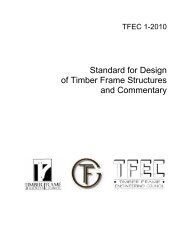Timber Frame Tension Joinery - Timber Frame Engineering Council
Timber Frame Tension Joinery - Timber Frame Engineering Council
Timber Frame Tension Joinery - Timber Frame Engineering Council
You also want an ePaper? Increase the reach of your titles
YUMPU automatically turns print PDFs into web optimized ePapers that Google loves.
1. Introduction<br />
1.1 General Overview<br />
The goal of this project was to quantify the strength of the timber mortise and tenon<br />
connection when loaded in tension. This connection is made entirely of wood and has been<br />
used for centuries; however, its behavior has never been described mathematically. A typical<br />
application of the mortise and tenon connection is to join a beam to a post (Figure 1-1) in a<br />
heavy timber structure. A mortise is notched out of the post and a tenon on the end of the<br />
beam is then fit into the mortise. The entire system is held together with hardwood pegs.<br />
An example of a situation in which this connection is loaded in tension in a timber frame is<br />
at the end of a tie beam (Figure 1-2) (Hewett, 1980).<br />
This method of connecting wood members became obsolete in the early 1800’s as<br />
inexpensive nails began to replace the all-timber connections (Elliot and Wallas, 1977). This<br />
traditional style of timber framing has only recently regained popularity in housing and other<br />
heavy timber construction. The modern timber frame is energy efficient (through use of<br />
stress-skin panel insulation), comfortable to live or work in, elegant in style, and efficient in<br />
its use of timbers.<br />
Mortise<br />
Tenon<br />
Wood<br />
Pegs<br />
Post<br />
Beam<br />
Figure 1-1 Typical Mortise and Tenon Connection<br />
1




